Rotary evaporator machine is an essential laboratory tool used in various scientific disciplines for the separation of volatile compounds from their solvents. This machine uses vacuum technology and heat to evaporate solvents in a controlled manner. Today Jordan will show you what a rotary evaporator machine is, its components, operation, and applications in various scientific fields.
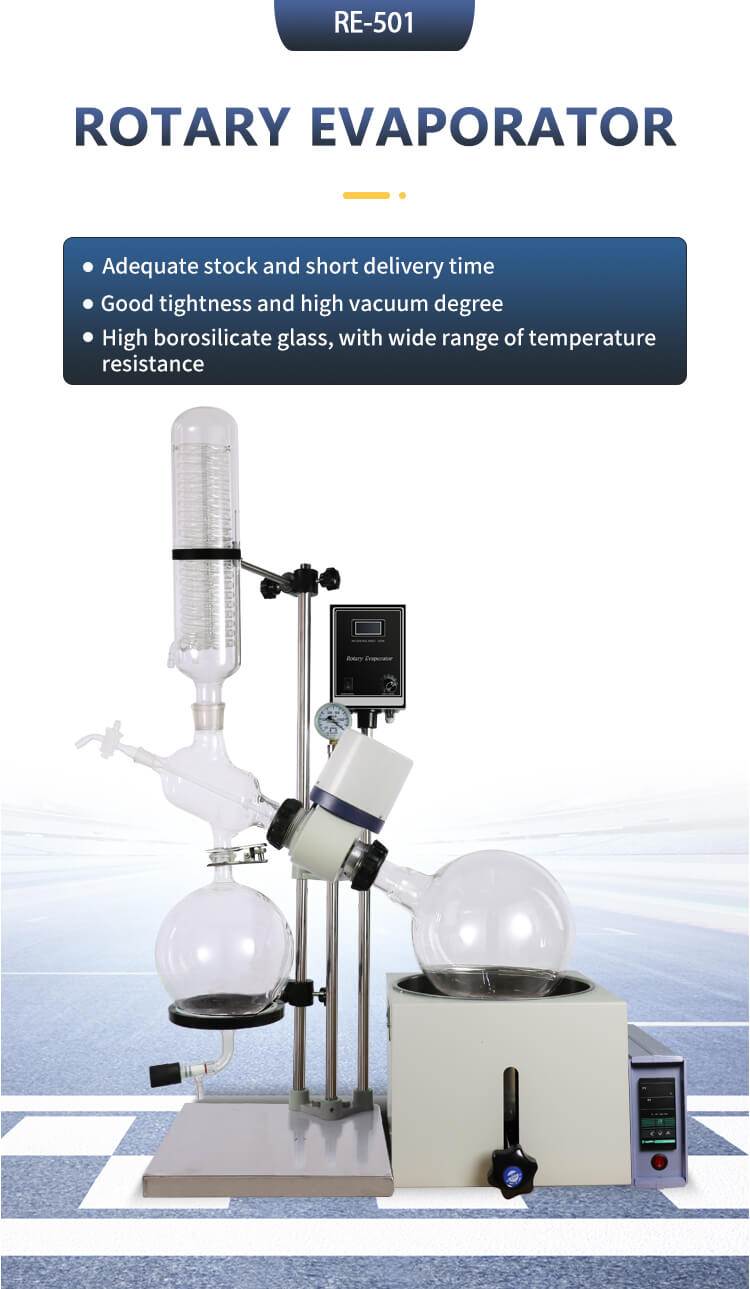
Components of a Rotary Evaporator Machine
The rotary evaporator machine has several essential components, including the heating bath, vacuum pump, evaporation flask, and condenser. The heating bath is a water or oil bath used to heat the sample, and the vacuum pump is used to lower the pressure inside the system. The evaporation flask is the container that holds the sample, and the condenser is used to condense the evaporated solvent.
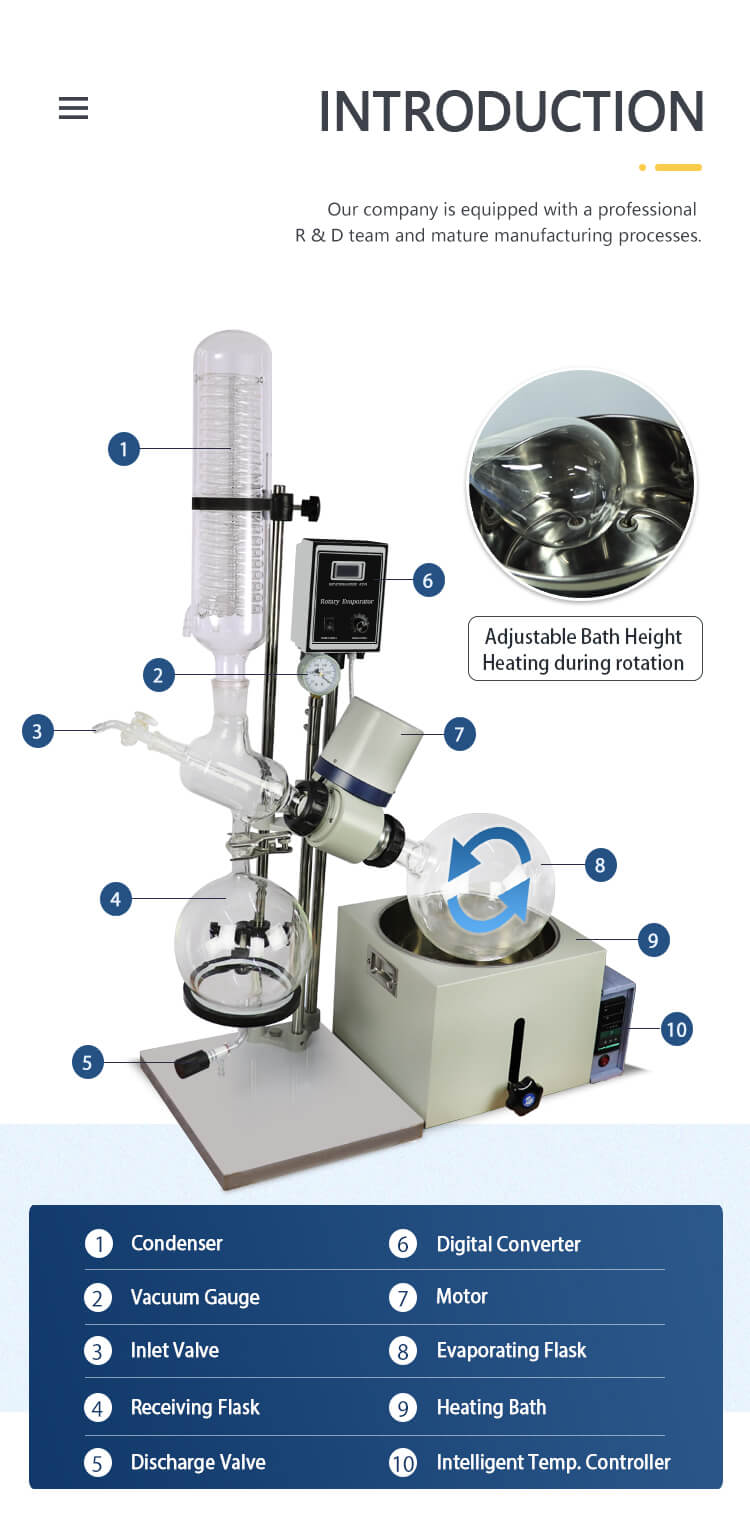
Applications of Rotary Evaporator Machine
Rotary evaporators are versatile laboratory tools that are used in various scientific fields for the separation of volatile compounds from their solvents.
1. Analytical chemistry: Rotary evaporators are commonly used in analytical chemistry for the purification and concentration of samples. This method can remove impurities and increase the concentration of the target compound, making it easier to analyze using techniques such as chromatography.
2. Organic chemistry: In organic chemistry, rotary evaporators are used to separate reaction products from reaction solvents. This allows researchers to isolate and purify the desired product for further analysis or use.
3. Food industry: Rotary evaporators are used in the food industry to remove undesirable flavors and aromas from products, such as in the production of coffee or tea extracts. They are also used in the production of essential oils and perfumes.
4. Pharmaceutical industry: Rotary evaporators are used in the pharmaceutical industry for the purification and concentration of compounds, such as in the synthesis of drug candidates or the isolation of natural products for drug discovery.
5. Environmental testing: Rotary evaporators can be used in environmental testing to separate and concentrate pollutants or contaminants from environmental samples, such as soil or water.
6. Materials science: Rotary evaporators are used in materials science to remove solvents from thin films or coatings, such as in the production of electronic devices or solar cells.
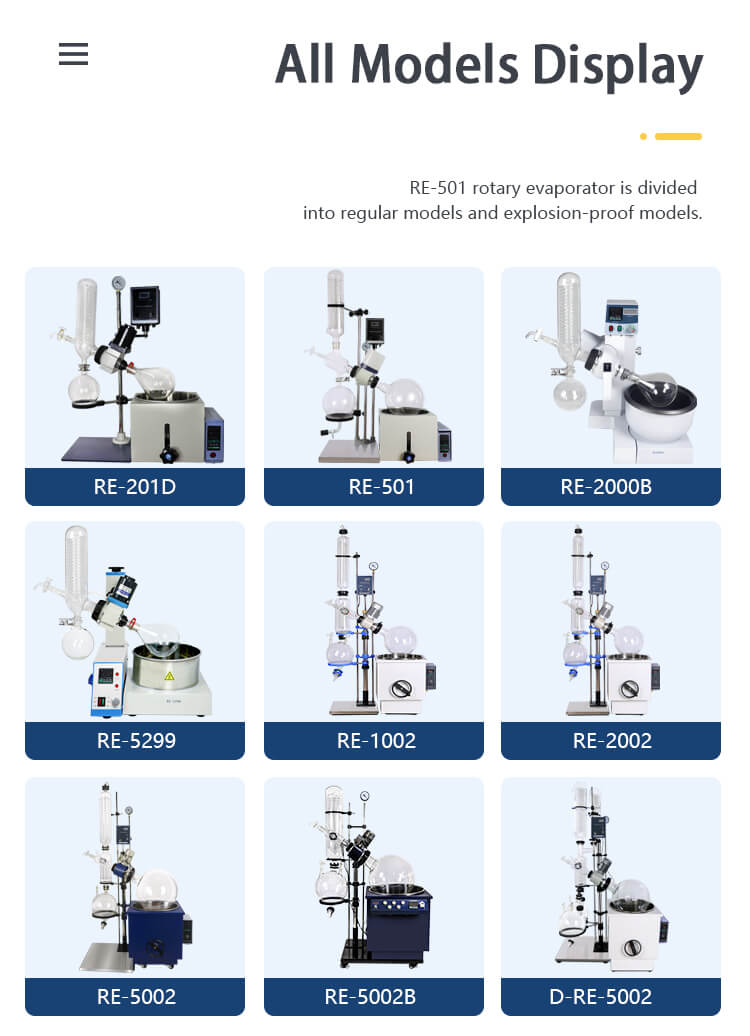
The application of rotary evaporators is widespread, and they are a valuable tool in various scientific fields. They offer precise control over the evaporation process, are relatively fast and efficient, and can be used for a wide range of applications.
Advantages of Rotary Evaporator Machine
Rotary evaporators offer several advantages in the separation of volatile compounds from their solvents.
1. Precise control over the evaporation process: Rotary evaporators allow for precise control over the evaporation process, including the temperature of the heating bath and the pressure inside the system. This precision control enables researchers to carefully manipulate the conditions of the evaporation process, which can impact the quality and purity of the final product.
2. Fast and efficient: Rotary evaporation is a relatively fast and efficient method for separating compounds compared to other separation methods such as column chromatography. This method can typically process a large number of samples quickly and efficiently.
3. High recovery rate: Rotary evaporators have a high recovery rate, meaning that a significant amount of the solvent can be recovered for reuse. This is particularly useful for researchers working with expensive or limited solvents.
4. Versatility: Rotary evaporators are versatile and can be used for a wide range of applications in various scientific fields. They can be used to purify and concentrate samples in analytical chemistry, separate reaction products from reaction solvents in organic chemistry, and remove undesirable flavors and aromas from food products, among other uses.
5. Ease of use: Rotary evaporators are relatively easy to use, with simple controls and a straightforward process for loading samples and collecting the evaporated solvent. This makes them an attractive option for researchers who need to process large numbers of samples quickly and efficiently.

The advantages of rotary evaporators make them an essential tool in many scientific disciplines, particularly those that involve the separation of volatile compounds from their solvents.
Supporting Equipment For Rotary Evaporator Machine
1. DLSB-5/10℃ low temperature coolant circulation pump.
DLSB-5/10℃ low-temperature coolant circulation pump uses mechanical refrigeration technology to provide low-temperature liquid and low-temperature water bath. In addition to being used with a rotary evaporator, it can also be used with vacuum freeze drying ovens, magnetic stirrers and other instruments.
2. SHZ-D circulating water vacuum pump.
SHZ-D circulating water multi-purpose vacuum pump uses water as the working fluid, and vacuumizes by using the negative pressure generated by the jet. It is suitable for research experiments, small tests and small batch production of evaporation, distillation, crystallization, drying, sublimation, vacuum filtration and other processes.
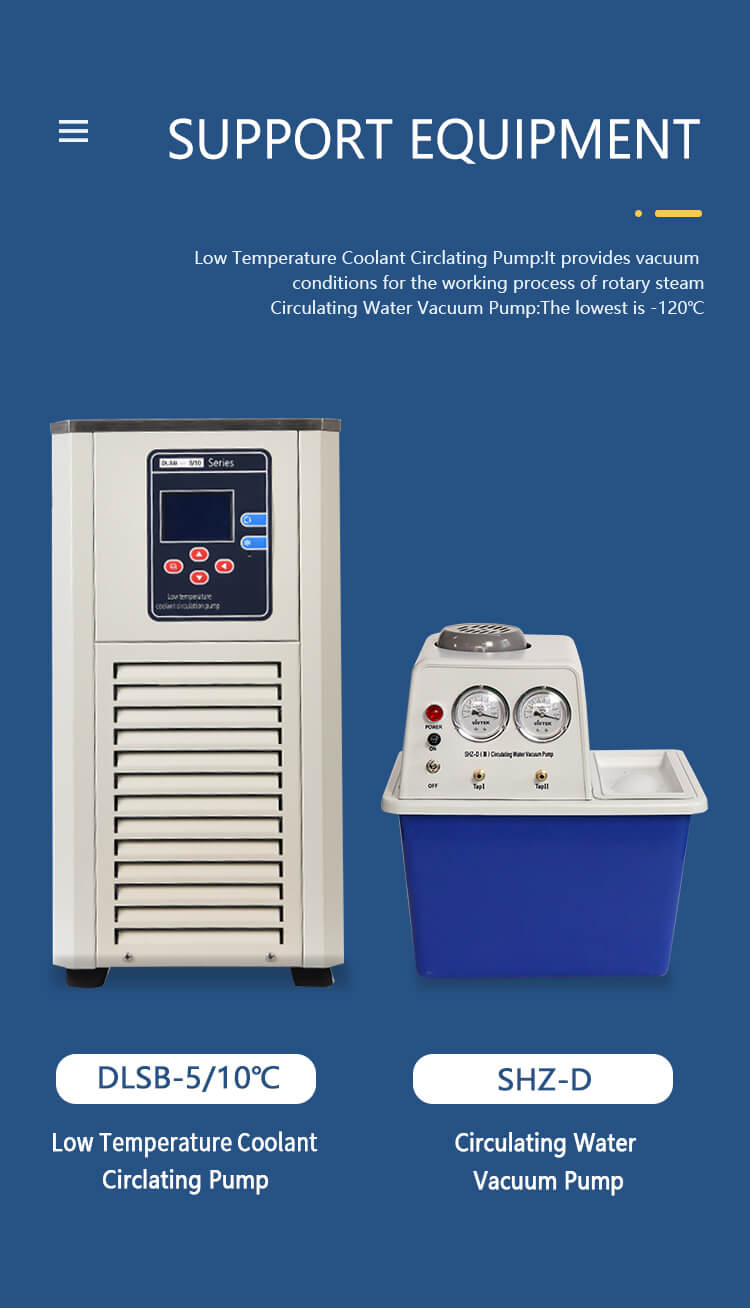
Safety Considerations for Rotary Evaporator Machine
Rotary evaporator machines require several safety considerations due to their use of heat and vacuum technology. The heating bath and evaporation flask can reach high temperatures, and the vacuum pump can create a low-pressure environment, so care must be taken to avoid burns and implosions. The use of protective equipment, including gloves, goggles, and lab coats, is essential when operating a rotary evaporator machine.
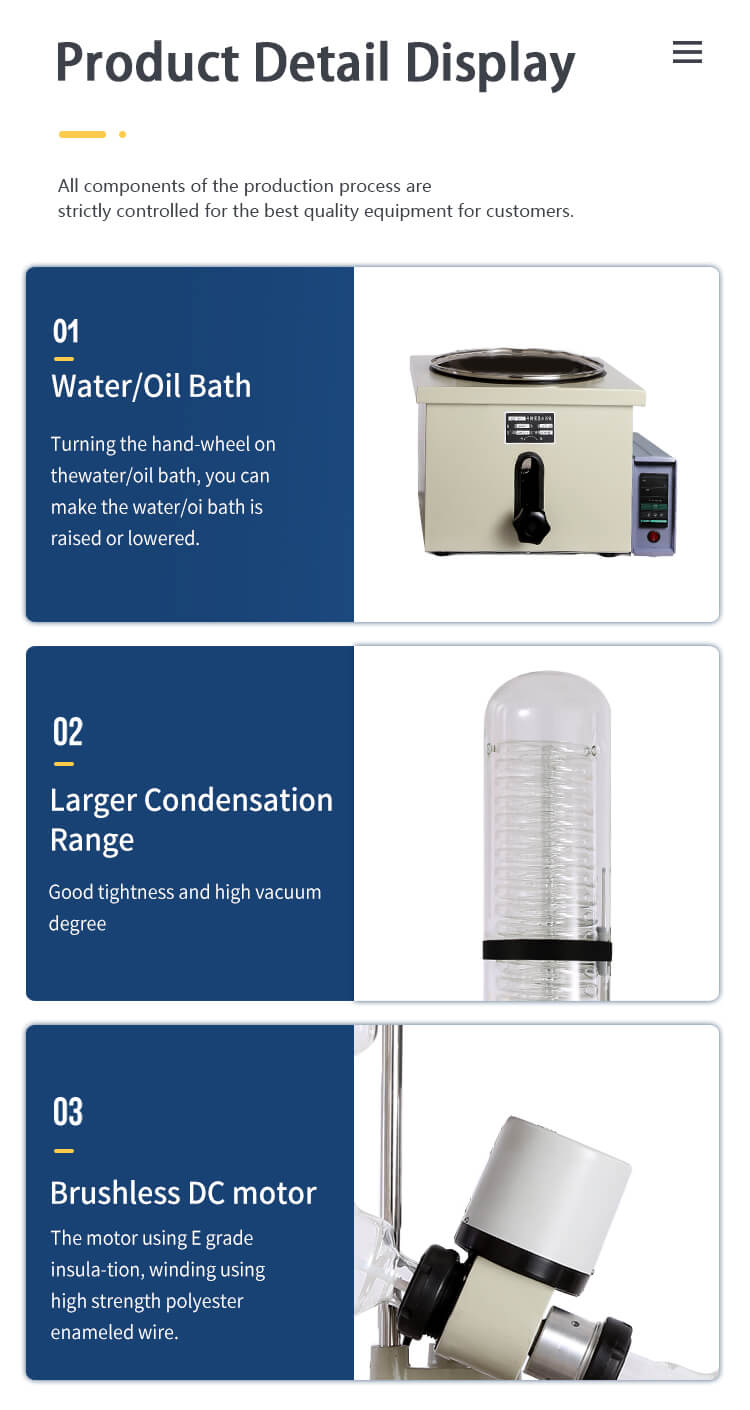
The rotary evaporator machine is a critical tool in various scientific fields for the separation of volatile compounds from their solvents. Its components, operation, applications, advantages, and limitations, as well as safety considerations, have been discussed in this essay. Despite its limitations, the rotary evaporator machine remains a popular choice for researchers who need to process large numbers of samples quickly and efficiently.





